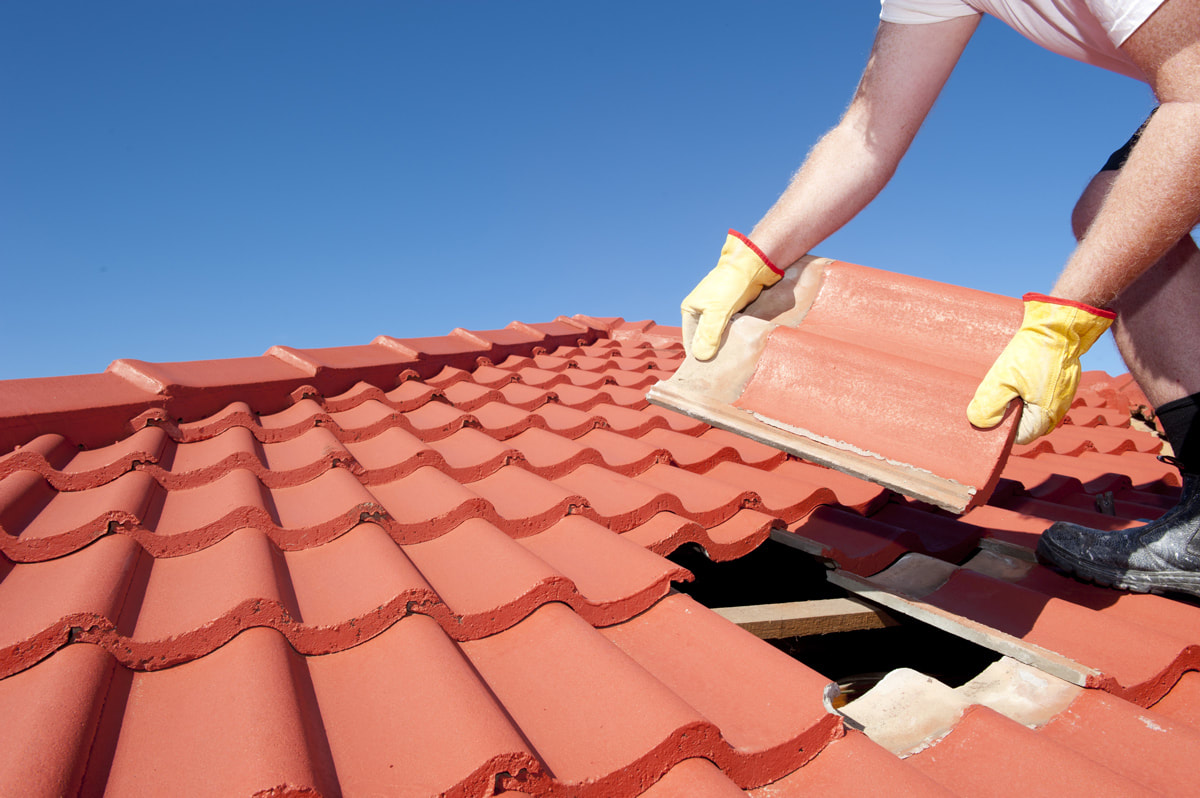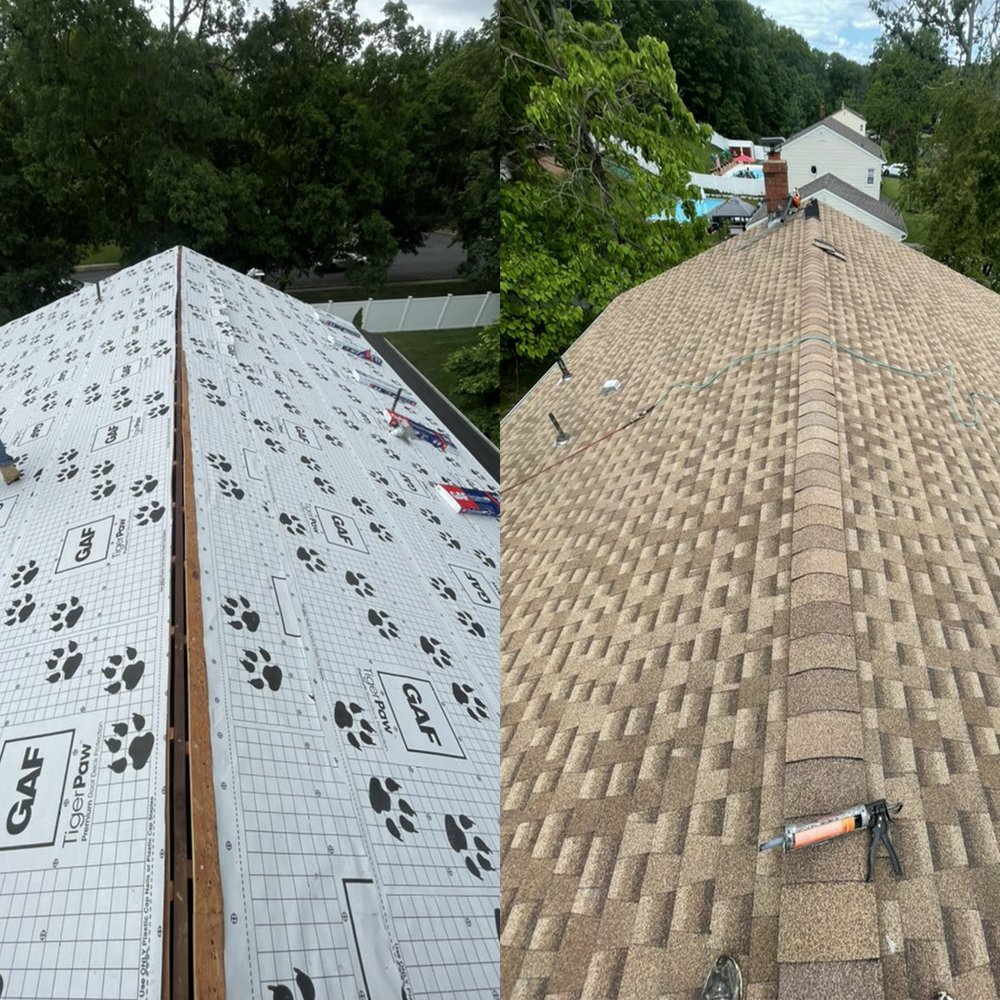Comprehending the Different Sorts Of Roofings: A Comprehensive Guide for Homeowners
In the world of homeownership, selecting the appropriate roof covering style is a decision that carries substantial effects for both capability and aesthetic appeal. With a variety of options-- varying from the conventional gable to the modern flat-- each type presents distinct benefits and difficulties that ought to straighten with the homeowner's particular needs and ecological factors to consider. Understanding these differences not just aids in making an enlightened choice but likewise affects long-term maintenance and power efficiency. As we explore the intricacies of different roofing kinds, it ends up being apparent that one dimension does not fit all; the appropriate selection might stun you.
Saddleback Roof
Saddleback roofs, defined by their triangular shape, are among the most popular roof designs because of their simpleness and efficiency in dropping water and snow. This design includes two sloping sides that meet at a ridge, enabling effective water drainage and reducing the risk of water build-up. The steep pitch frequently linked with saddleback roofs improves their capacity to manage heavy rainfall, making them suitable for different environments.
In addition to their functional benefits, saddleback roofs supply visual flexibility. They can be adjusted to various architectural designs, from standard to modern homes. The layout can also fit added attributes such as dormer home windows, which boost natural light and ventilation in the attic room space.
In addition, gable roofs provide adequate area for insulation, adding to power performance. House owners can select from a range of roofing materials, consisting of asphalt shingles, metal, and floor tiles, better boosting personalization choices.
Regardless of their benefits, gable roof coverings may call for extra assistance in locations vulnerable to high winds or heavy snowfall. In general, the gable roofing system continues to be a preferred choice as a result of its mix of performance, resilience, and visual appeal.
Apartment Roofs
Level roof coverings are frequently acknowledged for their minimal style and sensible applications, particularly in industrial and industrial settings (oahu roofing). These roof coverings include a straight or nearly straight surface area, which permits easy building and construction and functional space use. While they may lack the visual charm of pitched roof coverings, level roofings offer various benefits, specifically in metropolitan atmospheres where taking full advantage of room is vital
One of the main advantages of flat roofs is their ease of access. Home owners can use the roofing system area for numerous purposes, such as rooftop gardens, balconies, or solar panel installations. Furthermore, flat roofs are generally a lot more cost-effective to preserve and install compared to their sloped counterparts, as they require less materials and labor.
Nonetheless, flat roofing systems do present specific challenges. Proper water drainage is important to avoid water pooling, which can result in leaks and architectural damage. For this reason, picking top notch waterproofing products and normal evaluations are crucial for making sure longevity. Usual materials utilized for flat roofs include built-up roofing (BUR), modified bitumen, and single-ply membrane layers, each offering unique advantages. Generally, level roofs function as a adaptable and useful selection for lots of house owners and companies alike.
Hip Roofings
Hip roof coverings are defined by their sloped sides that merge on top, developing a ridge. This layout is distinct from gable roofings, as all four sides of a hip roofing incline downwards toward the read the article wall surfaces, giving a much more secure structure. The angle of the inclines can differ, permitting flexibility in architectural visual appeals and capability.
Among the main advantages of hip roofings is their ability to endure heavy winds and damaging climate conditions. The sloped surface areas make it possible for much better water drainage, minimizing the threat of leakages and water damages. In addition, hip roofings use increased attic room space, which can be used for storage space and even exchanged comfortable locations.
Nevertheless, creating a hip roof covering can be a lot more complex and pricey than easier roof kinds, such as gable roofing systems. The added material and labor entailed in producing the inclines and making certain appropriate structural honesty can cause higher expenditures. In spite of these disadvantages, numerous house owners prefer hip roofs for their longevity, aesthetic charm, and possibility for power performance.
Mansard Roofing Systems
Mansard roof coverings, frequently recognized by their one-of-a-kind four-sided style, function 2 inclines on each side, with the lower incline being steeper than the upper. This building style, stemming from France in the 17th century, is not just cosmetically attractive but practical, as it makes the most of the usable area in the upper floors of a building. The high reduced incline permits even more headroom, making it an excellent choice for attics or lofts, which can be transformed right into living areas.
Mansard roofings are identified by their flexibility, accommodating different architectural designs, from traditional to modern. They can be created with various materials, including asphalt shingles, slate, or metal, supplying home owners with a variety of alternatives to suit their budgets and choices. Furthermore, the style permits the assimilation of dormer home windows, enhancing natural light and ventilation in the top levels.
Nonetheless, it is find more necessary to take into consideration the prospective downsides. Mansard roof coverings might need more upkeep due to the intricacy of their design, and their high slopes can be testing for snow and rain runoff. Overall, mansard roofs incorporate style with functionality, making them a prominent option among homeowners seeking distinctive building functions.
Shed Roof Coverings
As home owners progressively seek simpleness and capability in their architectural designs, dropped roofing systems have actually arised as a preferred option. Identified by a single sloping aircraft, a shed roof offers a minimalist visual that matches various home styles, from modern to rustic.
One of the primary benefits of a shed roof is its straightforward building and construction, which usually translates to reduce labor and product expenses. This layout enables efficient water drainage, minimizing the danger of leakages and water damage. In addition, the vertical slope offers enough space for skylights, enhancing natural light within the interior.
Dropped roof coverings also use adaptability in regards to use. They can be properly incorporated into enhancements, garages, or exterior frameworks like structures and sheds. Moreover, this roof style can accommodate numerous roof products, including steel, asphalt shingles, and even eco-friendly roofings, straightening with eco-friendly initiatives.
Nonetheless, it is important to take into consideration regional climate conditions, as heavy snow lots might demand adjustments to the roofing system's angle or structure. Overall, dropped roofings provide a practical and aesthetically pleasing alternative for property owners seeking to maximize performance without compromising design.
Final Thought


Gable roofing systems, defined by their triangular shape, are among the most popular roofing styles due to their simpleness and effectiveness in dropping water and snow. oahu roofing. The high pitch generally associated with gable roofings boosts their ability to deal with hefty rainfall, making them ideal for various climates
While they may do not have the visual appeal of pitched roofing systems, flat roofings supply numerous advantages, particularly in city environments where making best use of space is important.
